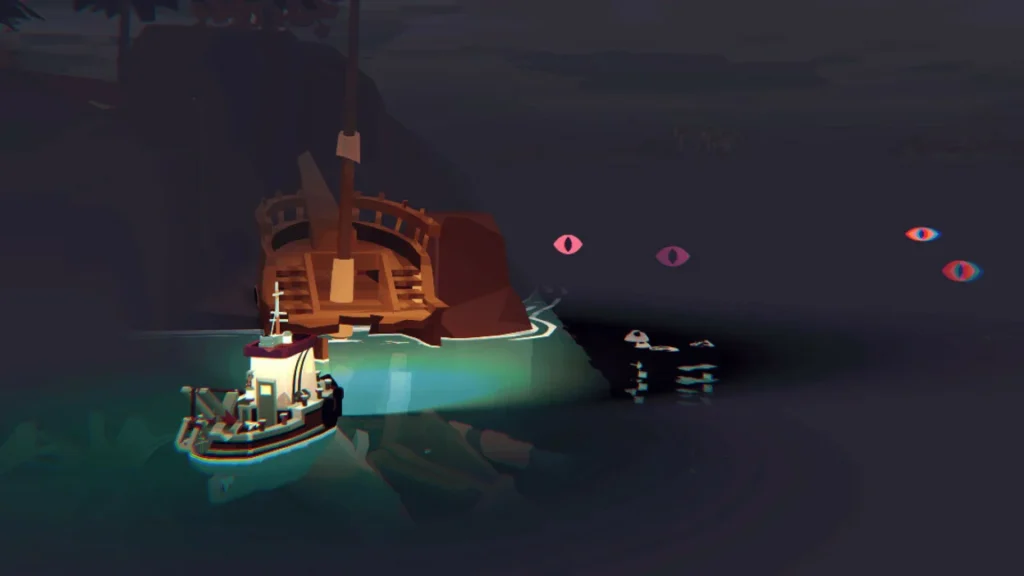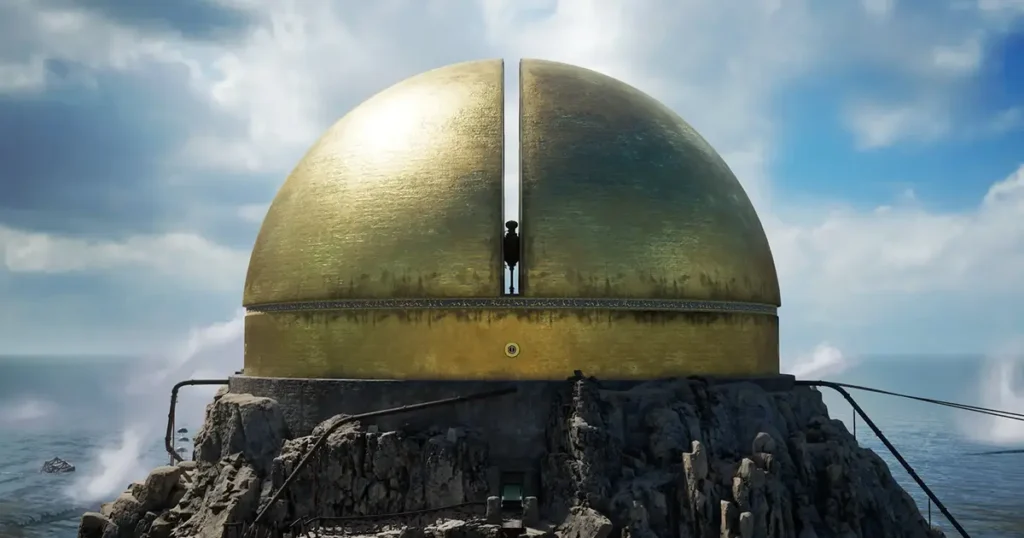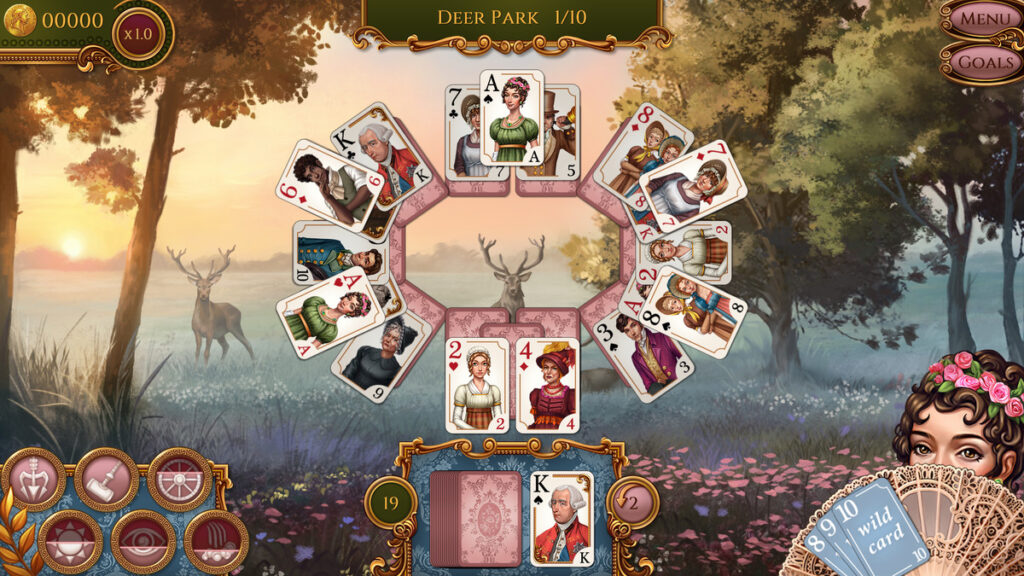Gaming Notes

Lotta anxiety and fear for the future floating around this site these days, huh? As someone who’s been struggling with that sort of thing since October, may I recommend my foolproof strategy: push it all down, turn inward, and focus on personal projects. It’s an approach that has absolutely no downsides except for all the obvious ones! And happily, this summer has proven eager to provide me with distractions. I’m preparing for an upcoming book launch, laying out my new apartment, planning my mother’s 80th birthday party, and oh yeah, my phone got stolen and I was briefly unpersoned. Who has time to think about politics?
Seriously, though, one of the reasons that I’ve been hesitant to write about the unfolding catastrophe in my country, or the potentially looming one in yours, is that I’m panicking pretty hard about both of those things. And my response to the idea of putting my panic on the internet for everyone to see—and, perhaps, to join in on—is literally nausea. So I end up saying nothing, which I will not pretend is a particularly wise, superior, or even very blogger-like thing for me to do. But when I put words to a page, I like to think that there’s some utility to the act. For me, that comes from talking about culture, informing people about things they might be interested in, and situating them in an interesting context. Even if those things are something objectively trivial like games. It’s probably best that the entire internet isn’t that way, but some you might enjoy the distraction.
As usual, some gaming news to start with. Some of you may recall my praise for the podcast Just King Things, whose hosts read and discuss the works of Stephen King in publication order, with a combination of genuine fondness and necessary irreverence. In a recent episode, co-host Michael Lutz, an academic in the field of games and game design, announced that he has been working on the upcoming game Project C, which is the next project by Sam Barlow (whose previous projects, Her Story and Telling Lies, have been discussed in recent installments of this series), alongside Brandon Cronenberg. That’s a combination of names and pedigree that I’ve very excited by (Lutz no less than the other two), so this game, whenever it comes out, is definitely on my radar.

Dredge (2023)
There’s a whole category of games whose mechanic is essentially “go out, acquire [resource], return to base, sell [resource], upgrade capabilities for access to more and better [resource], repeat”. It’s a pretty foolproof model because it requires the player to make straightforward but consequential choices—do you range further afield for more remunerative prizes, or stick to where you’re safe, but might potentially end up in a rut? Which type of upgrade should you spend your earnings on? There’s any number of real-world activities that are fun to think about from the comfort of your air-conditioned home that you can build a game like this around, and fishing, in particular, seems to be fruitful ground for it. The makers of Dredge, New Zealand-based studio Black Salt Games, took this extremely effective premise and added to it one additional, irresistible ingredient: Lovecraftian horror.
In Dredge, you play the captain of a fishing vessel in an archipelago haunted by creatures from the literal deep. Every island chain you visit is patrolled by sea monsters who try to wreck your ship and swallow your haul; the fish you bring up occasionally suffer from horrific mutations; and if you stay out too long after dark, the horrors you experience will wear on your sanity until it eventually snaps. This adds an extra layer of decision-making to the obvious ones: as well as deciding whether to expand your hold or buy a faster engine, you also have to consider tradeoffs such as sailing out at night to catch nocturnal fish, or venturing into waters where a vicious monster lurks to dredge shipwrecks for their sunken treasure. It also adds a lot of color and personality to the game. Both the sea monsters and the archipelago’s wide-eyed, haunted human denizens are imaginatively conceived and realized, with different settings—a mist-strewn mangrove swamp, an ancient city sunk beneath the sea by a volcano eruption—offering different challenges and prizes.
Technically, Dredge has a story—a mysterious figure who tasks you to retrieve a set of artifacts with which he plans to conduct an occult ceremony—but it’s a pretty thin one, and ultimately not very engaging (it’s for this reason, presumably, that the game features a whole raft of secondary tasks, some as simple as delivering a package, and others as arcane as retrieving specific fish to place on shrines scattered across the islands). The real fun of the game lies in its collect-them-all ethos—in souping up your ship, and tracking down every fish and mutation in the seas. And in case that seems overly familiar, the Lovecraftian gloss gives it an air of newness and a palpable sense of danger. The result is perhaps not as deep (hah) as it initially seems, but it is extremely satisfying, creating a setting that lends itself well to additional stories—Black Salt have already released one expansion that adds new areas and fish types to the game, and another is forthcoming next month.

Slay the Princess (2023)
The premise of this game is laid out right in the title. You play a nameless first person protagonist who is informed, as soon as the game begins, that they must go into a cabin and slay the princess who is imprisoned there. Otherwise, the player is warned, the princess will end the world. If you’re like me, that description maybe made you let out an involuntary groan, recalling as it does the obsession that a certain tranche of indie games has with complicity. You know, the sort of game that forces you to commit horrific acts if you want to advance in its story, and then decries you for doing so. Happily, that is not at all what Slay the Princess is interested in. For as limited as the game’s setting is—there is basically just the cabin where the princess is imprisoned—it actually offers the player a fairly wide variety of options. You can choose to go into the cabin and slay the princess without a word. You can choose to walk away. You can choose to talk to her. You can choose to free her. You can even choose to sit down next to her and chain yourself up as well.
None of these choices lead to a definitive ending—something that Slay the Princess is, in fact, intriguingly short of; even death will not stop the story, but simply bring your character back to its beginning. But they do affect what happens next is extremely dramatic ways. More precisely, they affect the princess. The smallest decision you make—whether to go in to see her with a weapon or bare-handed, whether to talk to her or remain silent—affects the kind of archetype she ends up embodying, which can be anything from a dainty damsel in distress, to a conniving witch, to doll-faced nightmare lurking in the shadows. From these small decisions, massive changes in storylines ripple outwards. In one playthrough, you might find yourself stalking (and being stalked by) a beast in the jungle; in another, exploring a non-euclidean space where a single wrong step can leave you falling for all eternity. There is a simply dizzying number of branching narratives to explore, which is set off nicely by the game’s minimalist interface and simple pen-and-ink art.
At its most basic level, then, the pleasure of playing Slay the Princess lies—as in Dredge—in collecting them all. Figuring out the various roles you can force the princess into, and the stories she then takes you on. But there’s another level to the game, which I will not say that much about, both because to do so would be very spoilery, and because it’s not quite as consequential as the game’s creators, Canadian husband-and-wife team Black Tabby Games, seem to think. The game’s constant repetition obviously raises some questions—not about complicity, thankfully, but about identity and storytelling. As the player character makes choices, their identity shatters into different traits, each of whom has a different perspective on their situation, often offering useful advice. The princess, meanwhile, eventually becomes aware of the way she’s been forced to embody different personas, and has her own reactions to that fact. Eventually, they both end up peeking behind the curtain of the reality they’ve been trapped in, and having to make decisions about what they find there.
It’s impressively bonkers, but at the same time not a little pretentious (not to mention, talky—the voice acting in this game is very good, and like the art, both minimalistic and expansive, but after a few playthroughs I found myself clicking through a lot of its run-on speeches). A player starting Slay the Princess will no doubt expect an explanation for its stark, logic-defying premise, ideally one that breaks the black-and-white choice the game initially presents you with. The game delivers this, but it comes so wrapped in cosmic woo-woo that it’s hard to take seriously. When you finish playing Slay the Princess—which is to say, when you’ve played it enough times to get a comprehensive sense of both the stories it can show you, and what lies beneath them all—the reaction is both to be pleased that a game this unusual and weird was allowed to exist, and to feel that the whole exercise was in service of something a bit silly. It’s up to you to decide which one of those things—the utterly original journey, or the slightly shopworn destination—is more important to you.

Riven (2024)
Riven is, of course, the sequel to Myst, the wildly successful and influential puzzle game from 1993 that revolutionized the gaming industry in several different ways, from establishing CDs as not just a viable but an essential medium for gaming, to setting a new standard of visual and auditory splendor, to spawning a whole subgenre of “nameless first person player explores an island” games. Its sequel, published in 1997, took all the superlatives heaped on the original game and exceeded them. Its setting was more beautiful and more exciting to explore; its puzzles were cleverer and more organically embedded in their world; best of all, buttressed by a series of tie-in novels published in between the two games, Riven took the fairly small-scale family drama that underpinned Myst and expanded it into a multigenerational saga with tendrils in colonialism and cultural imperialism. Myst was good, not to mention groundbreaking and influential; Riven was a masterpiece.
Strangely enough, however, while Myst has received multiple remastered versions—in 2000, 2014, and 2021—that bring it in line with modern gaming standards (the original game was a slideshow that moved the player between different static locations; later editions have transformed this into a full-motion 3D environment), Riven has never received this sort of treatment. The best you could hope for was a port of the original, slideshow-style game that might play on your newer platforms. Until now, that is: last month, original creators Cyan released a fully remastered version of Riven, and it is glorious. I haven’t loved the newer versions of Myst—they have tended to lose the beauty and strangeness of the original game—but the revamped Riven is a marvel of both technical achievement and artistry. It perfectly preserves the beauty of the original game’s world—the endless blue ocean that stretches out in every direction, the stark rock formations that jut out of it, and the gargantuan structures that mad tyrant Ghen has caused to be built on them; perhaps most importantly, the mingled feeling of isolation and of being constantly watched—while allowing you to move naturally within it.
(One place where the new Riven falls short of the original is, unfortunately but also predictably, the character animation. The original game’s full motion video segments are both too low quality to port over, and don’t work with the 3D environment. The compromise the new game comes up with is to keep (most of) the original voice performances, while creating 3D models of the characters. The result is tolerable at best, and loses many of the nuances of the original performances.)
The visuals alone would make the new Riven a must-buy for any fan of the series. But if, like me, you’ve played Riven so many times that you practically know it by heart, there’s an extremely wrongfooting moment early in the game when a solution to a puzzle is not where you expect it to be. And then again. And again. Before long it becomes clear that Cyan has revamped a large chunk of the gameplay and puzzles, making the new Riven, by my extremely unscientific estimate, at least 40% a new game. Some of these changes feel like gags—a certain item, which in the original game had to be pushed down, now needs to be pulled up—while others feel deeply considered—in the original game, the native inhabitants of the world use the numbering system of their colonizer, Ghen; the new game gives them their own system and requires the player to translate between them. I don’t love all of the new puzzles—I have never understood why the original Riven’s fire marbles puzzle was considered unreasonably hard, and its replacement feels a little over-designed—but even in places where I preferred the originals, there are choices that I found simply stunning, such as the new use the game makes of the starry rift, the break in reality that is threatening Riven’s cohesion. The result gives fans like myself the thing we most wanted—to be able to play Riven again, and feel like it’s a new game—and will make an excellent introduction to people new to the series.

Regency Solitaire (2015) & Regency Solitaire II (2024)
“Solitaire, but make it plotty” is a surprisingly robust genre of computer game. Or maybe not so surprising—most people know the standard deck of cards and the basic principles of a solitaire game, so designers can use that as a foundation on which they can graft elements from both computer games—creating elaborate playing boards and scenarios—and tabletop games—adding action cards and other capabilities that make the game more complex. Adding a plot on top of all that can help motivate the player to learn all these new rules and powers, turning what was once a time-wasting distraction into an engaging puzzle.
Regency Solitaire, by British company Grey Alien Games, is a perfect distillation of this method. Its version of solitaire is simple to learn and challenging to master, and it dangles additional capabilities in front of the player—the ability to take back a move, or reshuffle the deck—which they can purchase by playing additional hands and advancing in its story. That story sees debutante Bella attempt to stave off social ruin, avoid an odious suitor, and set her cap at a handsome duke, and although my Regency purist heart rebels at some of the storytelling choices—Bella’s brother gambles away the family fortune even though their father is alive? Ridiculous! Bella throws a ball on her own? Impossible!—the whole thing is sufficiently simple and low-stakes that you can enjoy it while still expending most of your energy on the actual game.
Regency romance having broken containment in the decade since the original Regency Solitaire was published, it’s not surprising that Grey Alien have decided to release a sequel in 2024. The new game is smart about what it chooses to update. The graphics are better, and a few of the action cards and special abilities have been tweaked. But ultimately, it’s the same game, but with new boards and a new story—one whose Bridgerton inspirations are as amusing as they are predictable. If you enjoyed the challenge of Regency Solitaire (as I did), you’ll be happy to know that there’s a whole new game that extends it even further.
In August 2024, Briardene Books will publish my first collection of reviews, Track Changes: Selected Reviews. The collection is available for pre-order, in paperback and ebook, at the Briardene shop, and will be launched at the 2024 Worldcon in Glasgow, Scotland.


